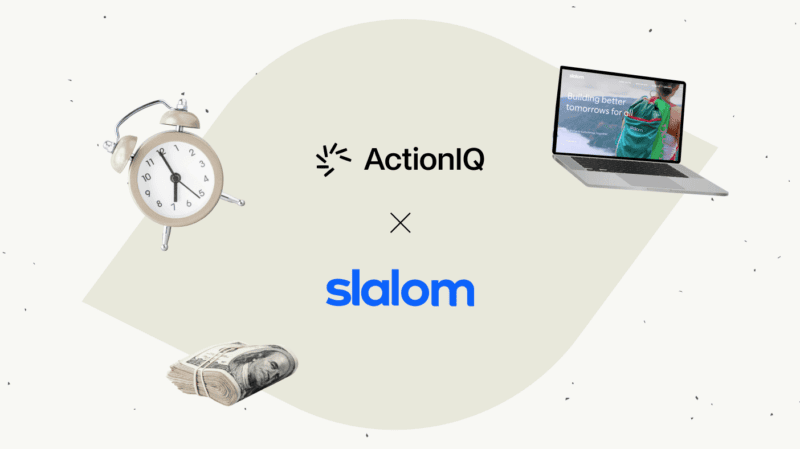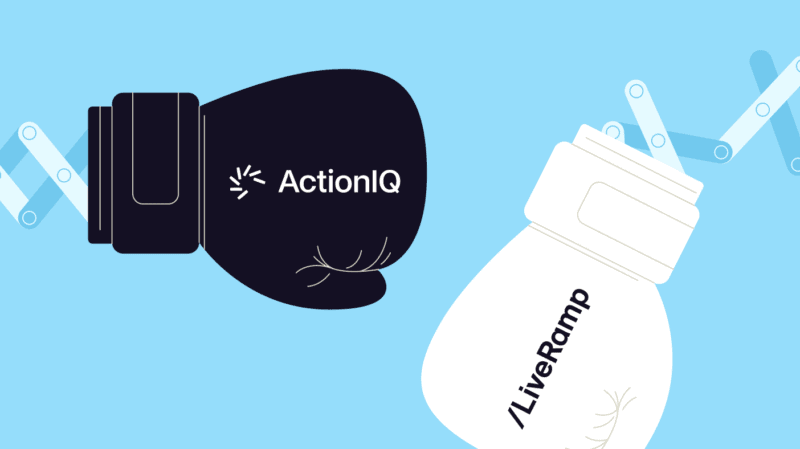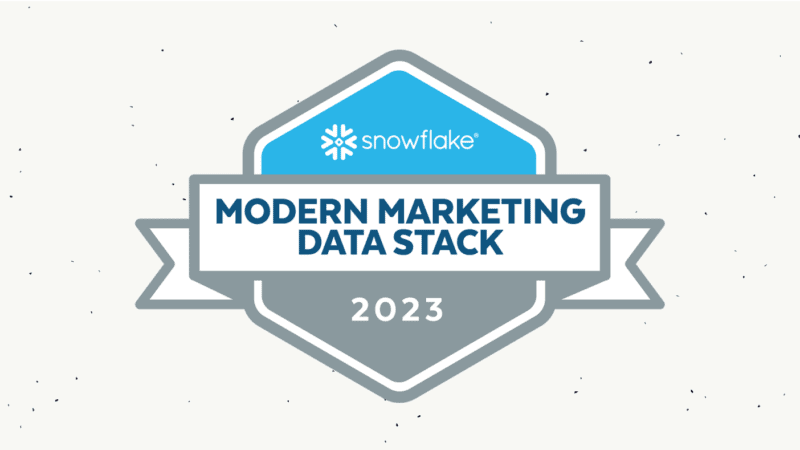How to Know When It’s Time to Look for a CDP

This article on when it’s time to implement a CDP was created in partnership with David Schweinfurth, Director, Global CDP Practice Lead, at Slalom.
In a report published by the Global Customer Data Platforms (CDP) Market, the global customer data platforms (CDPs) market size is projected to reach USD 5110.6 million by 2028, from USD 1905.7 million in 2021, at a CAGR of 15.0% during 2022-2028. It’s clear: the demand for the CDP is here and it’s here to stay.
For those who are unfamiliar with the CDP and how it fits into your martech stack — when do you know it’s time for a CDP? Oftentimes, businesses don’t understand the challenges they have that a CDP can solve.
Check out our blog post in partnership with Slalom to understand the questions organizations are asking themselves and how a CDP can help solve those problems. In addition, we’ll go into the rise of the composable CDP and how your organization can benefit from the value of centralized intelligence by syncing your data with last-mile execution tools.
How to Know When It’s Time to Look for a CDP
“We Need to Improve Our Customer Journeys”
Today, customer journeys are increasingly complex. Users are interacting with brands in a hybrid format across online and offline, as well as across various channels and devices. One recent study found that consumers interact with brands across 20 different channels on average.
To keep up with today’s customers, it’s key to surpass expectations and have the functionality to maintain complex customer journey orchestration.
Putting customers — and their unique behaviors — at the center of your CX strategy is key.
In order to provide customers with what they want — consistent and cohesive experiences across each and every touchpoint — organizations must implement tools that connect their organization’s full breadth of customer data to power exceptional experiences.
CDPs empower business teams to create sophisticated, multi-step customer journeys that can be fully automated and dynamically adjust channels, content and timing based on customer behaviors and preferences. Creating a single customer view (a customer 360), which incorporates data from all channels, is pivotal in driving experiences and creating more relevant journeys.
“We’re Not Getting the Data We Need to Understand Our Customers”
As a result of siloed and fragmented data, IT users oftentimes become the gatekeepers as other parts of the organization rely on them to provide customer data. This slows down efficiencies and also prevents IT users from focusing on higher-impact projects.
The closer you can get the data to the business or customer is the key to capitalizing on it. Achieve data democratization by implementing a CDP.
By placing data security and governance in the hands of your IT organization, you give the rest of your business the opportunity to self-serve and action upon that data in a governed and secure way. As a result, there are no bottlenecks and IT can focus on higher-impact projects — giving your organization the ability to be confident in their usage of their data even though it has been opened up to more stakeholders.
“Our Customer Data is Too Complicated to Easily Activate”
Oftentimes, customer data is fragmented and siloed across multiple channels. This makes it difficult for teams to easily access and leverage that data to inform tailored experiences.
The complex and siloed nature of data can present multiple challenges for brands. Specifically for the following groups:
- Business Teams: Without accessibility to unified customer data, business teams struggle to understand who they’re reaching, making it challenging to segment audiences and activate personalized customer experiences effectively.
- IT Teams: Without accessibility to integrations with other tools, IT teams struggle to balance manual requests (like writing SQL) from business and data teams with finding time for higher-impact projects.
CDPs enable organizations to unify the complete breadth of relevant customer data with an easy-to-use interface for data management. With the introduction of the composable or unbundled CDP, businesses can now maximize the value of centralized intelligence by pushing queries to your data warehouse or wherever data is stored and leveraging the results without having to move that data.
With governed self-service access for business users, organizations can orchestrate seamless CX across all marketing, sales and customer service channels.
“We Need to Activate More Targeted Groups”
With a greater understanding of your customers comes the ability to target them more effectively.
Leveraging a CDP enables organizations to enhance and expand revenue streams by optimizing customer acquisition or increasing customer lifetime value (CLTV), as well as cutting marketing costs through improved audience targeting and shortened conversion times.
Measurement and optimization are key to creating an effective marketing strategy. With a CDP, they provide easy-to-use testing and measurement to automatically identify which campaigns, initiatives and customer journeys maximize desired business outcomes.
A CDP presents the opportunity to measure in a better way and increase overall campaign effectiveness.
Learn More About ActionIQ Paired With Slalom
Get in touch with our experts to discover how ActionIQ’s CX Hub and Slalom can deliver personalized experiences at scale.




